I have put off writing this article for months now. It's not that I don't want to write it but I know as soon as I do some new switch line will hit the market and already this article will be old news. I know many of you are reaching out looking for this info so therefore I will wait no longer to publish what I know and we'll tackle the new when it gets here! For the purpose of this article I am focusing on trout size spey/switch rods.
For the latest info on trout spey lines be sure to read "Trout Spey" - New Line Options" posted on 8/16/2016
Trout Spey/Switch Rods
What are they exactly? Baby spey rods...Small switch rods... Smaller versions of steelhead rods...I'd like to point out that a switch rod cannot switch into anything! The rod itself cannot change! It is not a transformer! The action and power of any particular rod is fixed. To change what you do with a switch rod REQUIRES you to change the line to match the style of fishing you wish to do with it. With that out of the way let's now accept the fact that there is no one line that does it all, period! End of discussion! But here's the good news! With a little information, planning and practice you can tune your fishing conditions with various lines that will let you fish many different techniques with your switch rods.Can you do it all with today's switch rods? The term "Switch Rod" implies that it is both a single hand rod and a spey rod but think of it in terms of the game of golf, that's like calling one golf club a switch club, same club that can drive your ball can putt your ball...I'm sure Tiger Woods can beat me in golf with only one club BUT! He would never agree that there would ever only be one club to do it all! And I Agree! Now with that out of the way I do believe our modern trout spey rods are closer than ever to what we want in a trout rod action.
What line do I need?
To make this as simple as possible I've decided to take it line by line and supply you the details of each including rods I have tried these lines on.
Airflo Switch Streamer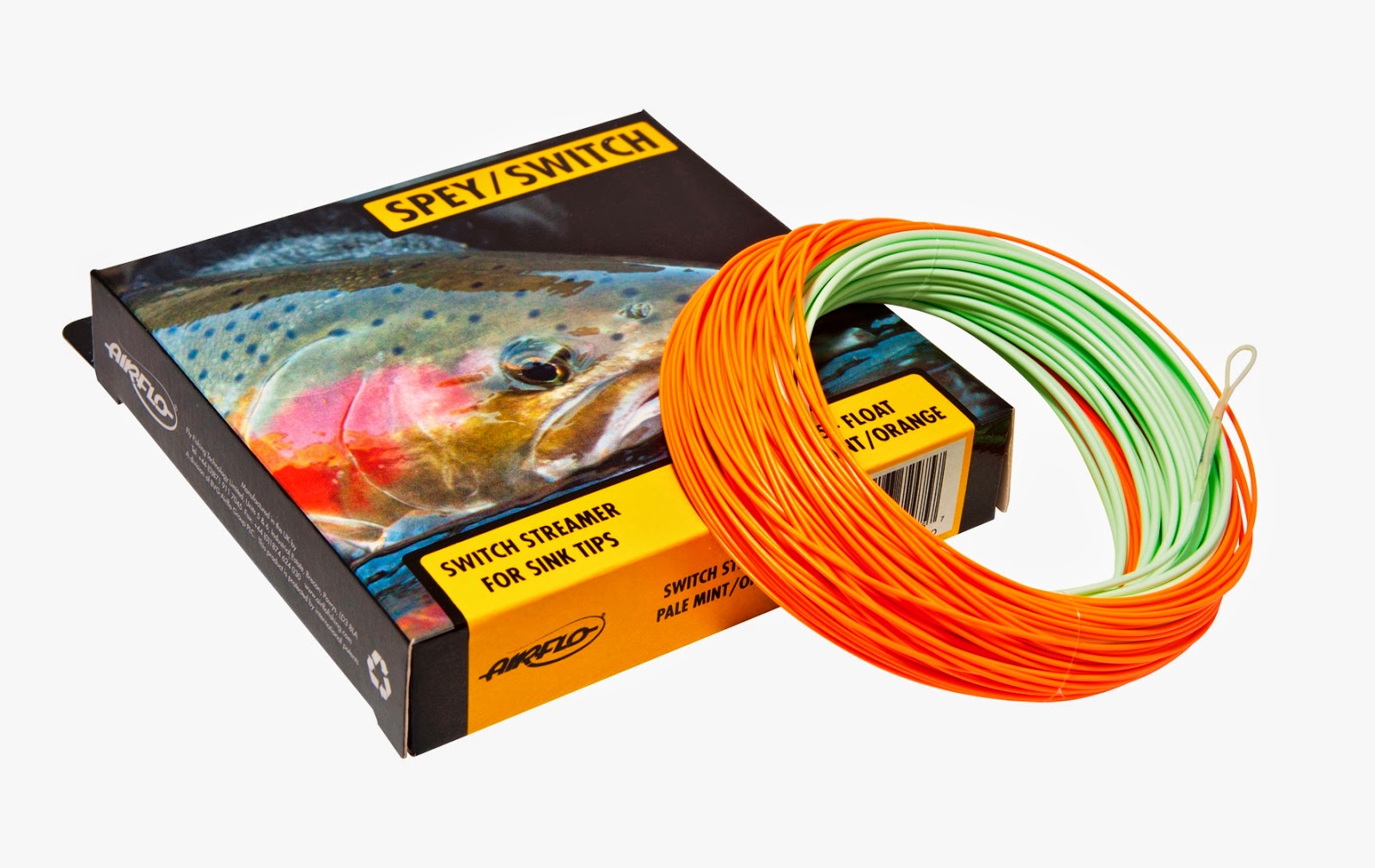 |
| Airflo Switch Streamer |
The Airflo Streamer Switch retails for $99.95 and comes with a Fast Sinking Polyleader to get you started. You will most likely want to go ahead and get an Airflo Custom Cut Single Sink Tip in the T-7 size.
Airflo Streamer Switch Specs -
| Line Size | Color | Head Weight | Head Length | Sink Rate | Total Length |
|---|---|---|---|---|---|
| WF4 | Pale Mint/Orange | 300 | 18ft | Float | 85ft |
| WF4.5 | Pale Mint/Orange | 330 | 18.5ft | Float | 85ft |
| WF5 | Pale Mint/Orange | 360 | 18.5ft | Float | 85ft |
| WF5.5 | Pale Mint/Orange | 390 | 20ft | Float | 85ft |
| WF6 | Pale Mint/Orange | 420 | 20ft | Float | 85ft |
RIO Scandi Short VersiTip
 |
| RIO Scandi Short Versi-Tip |
Specs -
| SKU | Line Size | Head Weight | Head Length | Color | Sink Rate |
|---|---|---|---|---|---|
6-20659
|
#4
275gr
|
275gr
|
33ft
10m
|
Straw
|
Flt
w/ 4 tips
|
6-20660
|
#5
320gr
|
320gr
|
33ft
10m
|
Straw
|
Flt
w/ 4 tips
|
6-20661
|
#6
370gr
|
370gr
|
33ft
10m
|
Straw
|
Flt
w/ 4 tips
|
6-20662
|
#7
425gr
|
425gr
|
33ft
10m
|
Straw
|
Flt
w/ 4 tips
|
6-20663
|
#8
485gr
|
485gr
|
33ft
10m
|
Straw
|
Flt
w/ 4 tips
|
6-20664
|
#9
540gr
|
540gr
|
33ft
10m
|
Straw
|
Flt
w/ 4 tips
|
 |
| Notice this chart gives you the actual head weight and tip weight separately |
S/A Adapt
 |
| Scientific Anglers Adapt |
Scientific Anglers you almost got this line right! So close! I liked this line and I wanted to really like this line! The Adapt (like the Airflo Streamer Switch) is an integrated line with a somewhat aggressive skagit head. The thin diameter running line really flies through the guides and the textured head stays on top of the water better than most others I've fished. The problem is the front taper. It's fine if you are fishing tapered leaders but the problem starts when you add a sink tip. The line tapers down too small to retain enough mass to turn over a sinking tip. The result is struggling to turn over your casts. Polyleaders work decent with the Adapt line but forget fishing T-Series tips. I actually modified my line by cutting the tip back and welding a new loop to the end. The difference is huge. But who wants to chop their brand new $86.95 line. I'm sure out of the box it would make a good nymph/indicator line.
| Order # | Line Size | Head Length | Sink Rate | Total Length |
|---|---|---|---|---|
120500
|
280gr
|
22ft
|
Float
|
100ft
|
120517
|
320gr
|
22ft
|
Float
|
100ft
|
120524
|
360gr
|
22ft
|
Float
|
100ft
|
120531
|
400gr
|
22ft
|
Float
|
100ft
|
120548
|
440gr
|
22ft
|
Float
|
100ft
|
A note to the manufacturers - As a line company y'all need to decide if your switch line is made for leaders or tips. NOT BOTH! And please stop telling us they will do both! I've been around the river long enough to know that the "MIDDLE GROUND" fly lines do not do anything good! There is no one line for all switch rod applications. In reference back to earlier in the article remember a switch rod cannot switch into anything. We must switch the line to match the technique desired from our switch rod. We have a serious need for technique specific switch lines.
RIO Switch Chucker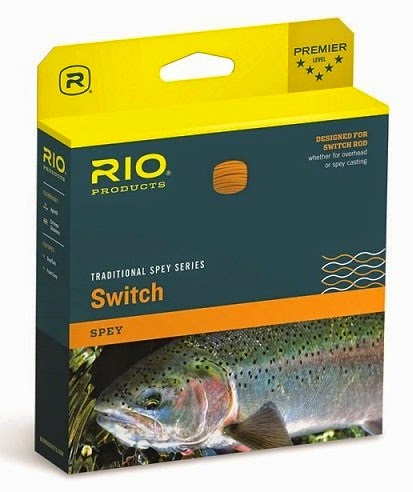 |
| RIO Switch Chucker |
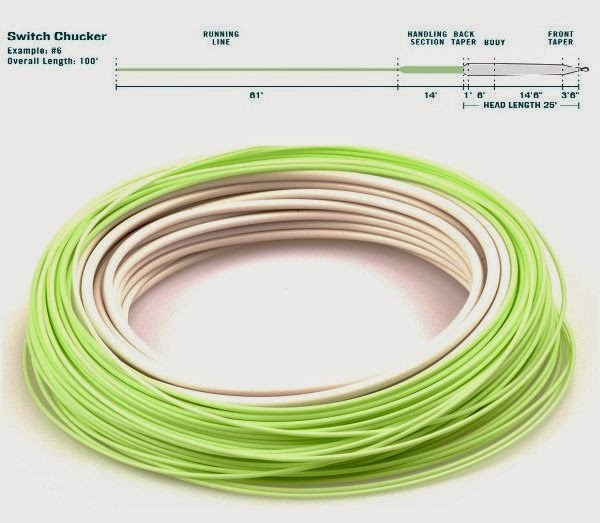 |
| RIO Switch Chucker |
RIO Switch Line
I'm not going to spend any time with this line other than to say this is a great choice if you use a switch rod to nymph from a boat. Don't expect to enjoy spey casting this line! End of discussion!
Skagit Heads
RIO, Airflo and S/A all make skagit heads down to trout rod sizes. For big rivers, sink tips and full on swinging flies these skagits work great. The RIO Max Short comes in sizes all the way down to 200gr. S/A Skagit Extreme comes in sizes down to 280gr and although S/A does not designate these as short or switch heads these smaller sizes do have shorter lengths suited for the shorter rods.The Airflo Skagit Switch starts at 360gr which can help your 5 weight and up switch rods. I don't spend much time with these skagits. Yes they work but they are really just downsized steelhead skagits. Two hand trout anglers like myself are really looking for a line designed for my game and not just an adopted line that already exists.
Overhead casting lines
Many anglers have found great use with switch rods for making long casts from beaches or jetties.I've heard many accounts from east coast striper anglers to west coast sea run cutthroat anglers of the use of switch rods for overhead casting. Typically we find in most cases that a 2 line size bump up will get you in the ballpark for matching these lines to switch rods; so for example if you have a Sage ONE 11'6" 5 weight switch rod then a Rio Outbound in the 7 weight size will get this rod happy. I like the fact that RIO posts the grain weights of their lines but please keep in mind that lining a switch rod for overhead casting is a lower grain weight window than lining the same rod for two hand spey casting.
RIO Outbound
One line that really jumps out for this purpose is the Rio Outbound. Not the short but instead the original 37.5' Outbound. Outbound's have shorter than normal heavy heads for deep rod loading and seamlessly attach to long thin diameter running lines for maximum distance. They come in Floating, Intermediate and a Type 6 sinking tip attached to full intermediate running lines for the ultimate in a sinking line.
Airflo Forty Plus
A 35' shooting head seamlessly attached to Airflo's famous ridge running line for extreme distance. The Airflo Forty Plus comes in Floating, Intermediate, Type 3, Type 5 and Type 7 sinking tips. The Forty Plus is built on Airflo's Low Stretch Braided Power Core for increased sensitivity and overall strength. Like the Outbound a 2 line size jump up will usually put you in the game.
Can you use standard single hand lines?
No! and Yes!As sure as I say "No you can't", I'll have 10 comments waiting for me from those who say "Yes you can!"
What you have to remember is switch rod weights do not match single hand rod weights. A 4 weight single hand line will not load a 4 weight switch rod effectively. Shooting head lines like the Forty Plus and Outbound are already bumped up way beyond single hand rod specs and still a 2 size bump up is usually needed to satisfy most switch rods. If you find a single hand line that cast well on your switch rod then you now basically have a really long single hand trout rod. Think, when was the last time you needed to make a 100' cast to a trout?! Never! I have found some of the shorter small trout speys like the Winston 3106 Microspey to overhand cast quite well with a RIO Grand WF5F line but I'm not ready to trade in my 4 weight dry fly rod. Personally I think we will have to see even shorter switch rods to obtain quality overhead presentations. I'm not saying it can't be done...It's just not the best tool for the job!
Let's summarize:
Overhead casting switch rods for distance...Yes!
Overhead casting switch rods for delicate trout presentations...No! Not really!
What's an integrated line?
Fully Integrated lines are just like what we know of as standard lines like a RIO Gold or S/A GPX. The weight forward head and small diameter running line are seamless just like a knotless tapered leader. Shooting line / Head systems are two separate lines. The Shooting (or often referred to as Running Line) is the thin section of level fly line similar to the back end of any fly line. But that's it, they cannot be used by themselves. You must attach a Head to the front to complete the line. The heads and shooting lines attach via a loop to loop system. The advantage of an integrated line for a trout angler is that stripping in close for say a following Brown is not hindered by a loop connection hanging in the rod guides. The disadvantage of course is you don't have the option to change heads quickly like steelheaders often do to adapt to changing conditions. If you fish large water and only swing flies then the loop of a head system won't bother you. But in small water or short overhead casting or stripping a streamer on a following trout, the loop to loop can become the difference of a hookup or not!What is the difference between T-Series Sink material and Polyleaders?
 Airflo Polyleaders and RIO Versileaders are similar products with different names and are quite different than T-Series. The first major difference is that these are leaders in such that they have a taper built in just like a standard knotless tapered leader. How that is accomplished is where polyleaders differ from leaders. A polyleader starts with a level nylon core usually 24 lb for most steelhead sizes. Then a poly coating is applied starting at the butt end and thinning out toward the tippet end. In this coating tungsten powder can be mixed and applied making it a sinking polyleader. The advantage of polyleaders is 1) they turn over better than regular leaders, 2) for spey casting dry lines they provide better water surface tension for improved anchor points, and 3) with sinking densities they allow us to gain the advantage of a sinking tip with a floating line. With all these advantages why not just use them in place of Tungsten sink tips? Well there is a major difference. Polyleaders just don't sink as good! Probably partly due to the nylon core and another reason is the thickness. Sink tip diameter plays a major role in how fast a tip sinks. Braided core is thinner therefore the overall diameter of the tip is thinner creating greater sinking ability. Polyleaders certainly have their place in our world of fishing but I would like to see some changes. Can a polyleader be built on a braided low stretch core? Can we build even smaller T-Series than our current T-7 size for the needs of a two hand trout angler? I would like to see T-5 and T-3. For now my Tips wallet includes a 10' T-11...10' T-7...Extra Super fast sinking polyleader...Fast sinking Polyleader...Slow sinking Polyleader and an Intermediate sinking Polyleader.
Airflo Polyleaders and RIO Versileaders are similar products with different names and are quite different than T-Series. The first major difference is that these are leaders in such that they have a taper built in just like a standard knotless tapered leader. How that is accomplished is where polyleaders differ from leaders. A polyleader starts with a level nylon core usually 24 lb for most steelhead sizes. Then a poly coating is applied starting at the butt end and thinning out toward the tippet end. In this coating tungsten powder can be mixed and applied making it a sinking polyleader. The advantage of polyleaders is 1) they turn over better than regular leaders, 2) for spey casting dry lines they provide better water surface tension for improved anchor points, and 3) with sinking densities they allow us to gain the advantage of a sinking tip with a floating line. With all these advantages why not just use them in place of Tungsten sink tips? Well there is a major difference. Polyleaders just don't sink as good! Probably partly due to the nylon core and another reason is the thickness. Sink tip diameter plays a major role in how fast a tip sinks. Braided core is thinner therefore the overall diameter of the tip is thinner creating greater sinking ability. Polyleaders certainly have their place in our world of fishing but I would like to see some changes. Can a polyleader be built on a braided low stretch core? Can we build even smaller T-Series than our current T-7 size for the needs of a two hand trout angler? I would like to see T-5 and T-3. For now my Tips wallet includes a 10' T-11...10' T-7...Extra Super fast sinking polyleader...Fast sinking Polyleader...Slow sinking Polyleader and an Intermediate sinking Polyleader.More information on the sinking tip/polyleader subject can be found in Sink Tips, Polyleaders, Versileaders - A Buyers Guide
Give us your experiences and examples of lines you have used and what you think. We welcome your thoughts and other readers do too. The subject of switch lines is far from being a closed door and the future still holds much room for new and improved.
Trout Spey Chronicles - More articles about Two Hand Trout Fishing

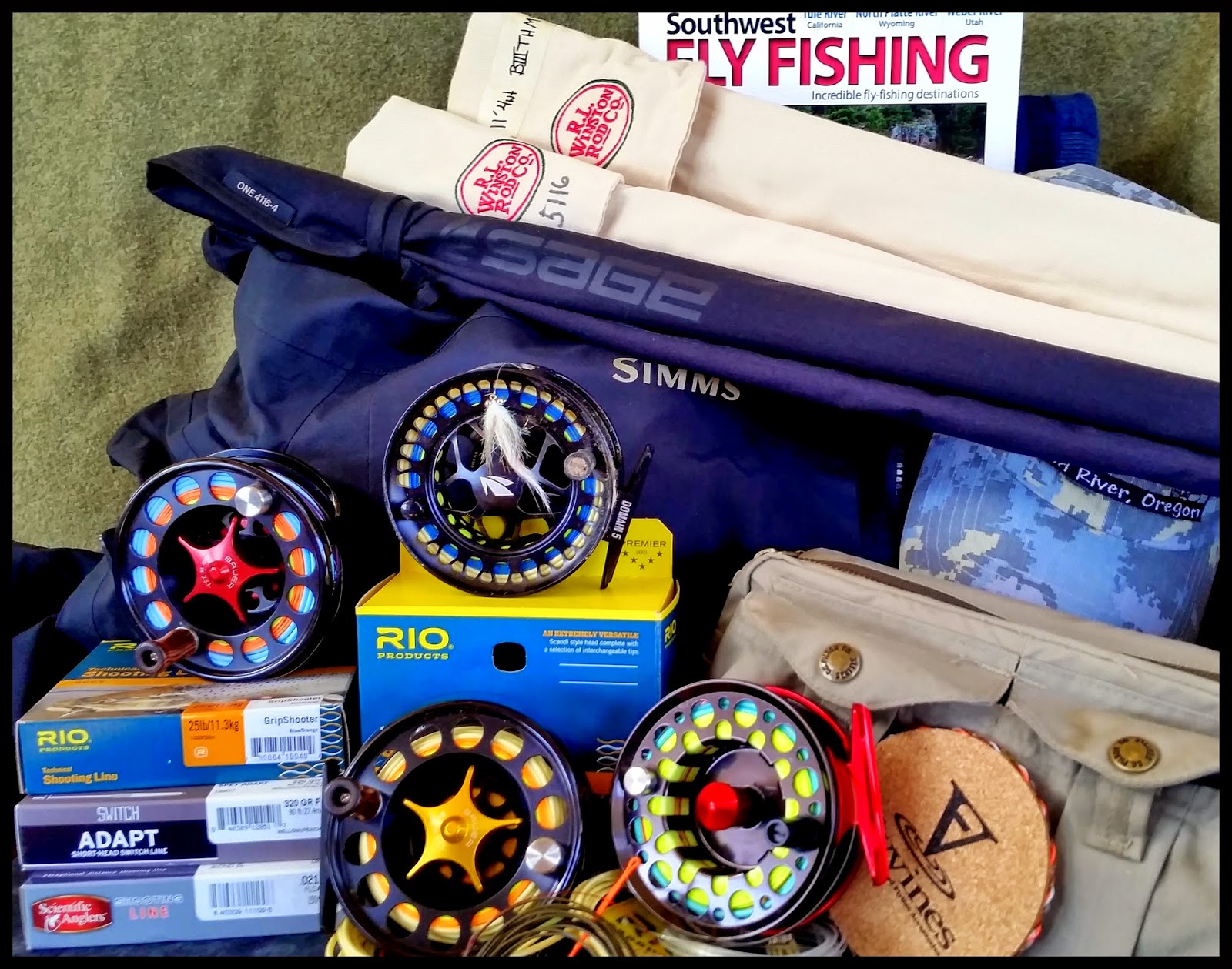










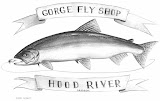













Greg,
ReplyDeleteI live in the SE and was introduced to 2 Handed rods in a visit OR about 5 years ago. I started with a Beulah 6/7 Switch rod. I wanted to use it for swinging wooley buggers etc. for trout in the local streams that were wide enough and minimize my wading. Finding an appropriate line without loops hanging in my guides close in was difficult. I found the Wulff Ambush line worked great as it has an integrated running line. I used various polyleaders/versileaders depending on depth and flow. I next wanted to swing small wet flies and soft hackles to size 18. I then found that the Rio AFS Outbound with the integrated running line was a fantastic application. Unfortunately Rio no longer markets this line in the US but it does in Europe. Therefore, they already have an ideal line for the trout applications for 2 handers. I purchased a number of these lines on Ebay as they became scarce. I use them on 6-8 wts and 10'6" to 12'6" rods. I have frequently used them on the larger rivers such as the Missouri in MT. I rarely fish a single hander any more and catch far more fish than I did "high-sticking" and dead drifting with a "indicator". If Rio could use the AFS design in 4-5 wts. they would have your answer!
Mtnplzur from SC
Greg,
ReplyDeleteThis is an excellent article, thanks for publishing. I swing for trout trout with Beulah's 325gr Skagit and 300gr Scandi on their Platinum 5116 rod. These rod/line combinations are fantastic. The Skagit handles T8 MOW tips and cone-head sculpin patterns superbly, and the Scandi casts soft hackles with delicacy and finesse. It's surprising that the Winston/Sage 4-weights are lined similar to the Beulah 5-weight, perhaps reflecting the slower more relaxed action of the Beulah rods.
Andy Mac, San Francisco